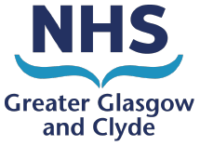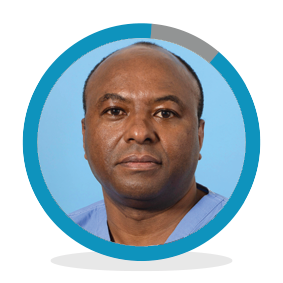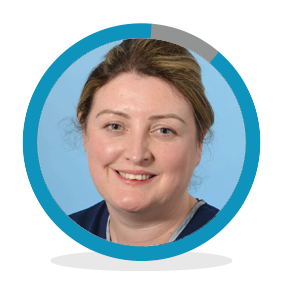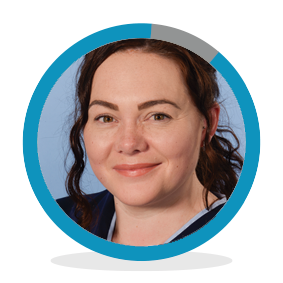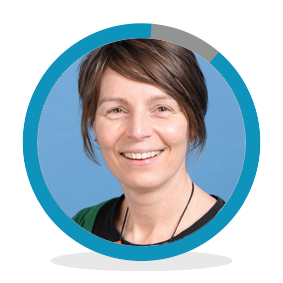Addresses, contact numbers and email addresses for our teams within Specialist Children’s Services.
Contact Child and Adolescent Mental Health Services (CAMHS)
East CAMHS
Parkhead Hub
1251 Duke Street
Glasgow
G31 5NZ
Telephone Number – 0141 277 7515
East Renfrewshire CAMHS
Barrhead Health Centre
213 Main Street
Barrhead
G78 1SY
Telephone Number – 0141 800 7886
Inverclyde CAMHS
Greenock Health and Care Centre
Wellington Street
Greenock
PA15 4NH
Telephone Number – 01475 495500
North CAMHS
Woodside Health and Care Centre
891 Garscube Road
Glasgow
G20 7ER
Telephone Number – 0141 201 5640
Renfrewshire CAMHS
Aranthrue Centre
103 Paisley Road
Renfrew
PA4 8LH
Telephone Number – 0141 886 5921
South CAMHS
New Gorbals Health and Care Centre
2 Sandiefield Road
Glasgow
G5 9AB
Telephone Number – 0141 201 5031
West CAMHS
The West Centre
60 Kinfauns Drive
G15 7TS
Telephone Number – 0141 207 7100
West Dunbartonshire CAMHS
The Acorn Centre
Vale of Leven District General Hospital
Main Street
Alexandria
G83 0UA
Telephone Number – 01389 817 324
Contact Hosted and Tier 4 Mental Health Services
Connect-ED
Templeton Business Centre,
62 Templeton Street,
Bridgeton,
Glasgow,
G40 1DA
Telephone Number – 0141 201 8080
National Child Psychiatry In-patient Unit
Ward 4 Royal Hospital for Children,
1345 Govan Road,
Glasgow,
G51 4TF
Telephone Number – 0141 452 4535 (office hours)
0141 452 4540 (evenings and weekends)
Paediatric Liaison Psychiatry Team
Business Support,
Office Block, Zone 2.01,
Royal Hospital for Children,
Queen Elizabeth University Hospital,
1345 Govan Road,
Glasgow,
G51 4TF.
Telephone Number – 0141 451 6529 (86529 for internal calls)
Paediatric Neuropsychology Service
Office Block, Zone 2.01
Royal Hospital for Children
Queen Elizabeth University Hospital
1345 Govan Road
Glasgow
G51 4TF
Telephone Number – 0141 451 6574
Monday – Friday (9am – 5pm)
Skye House – Adolescent Inpatient Unit
Stobhill Campus
133 Balornock Road
Glasgow
G21 3UW
Telephone Number – 0141 232 6420
Tier 4 Hub
Floor 1 Building 3 Templeton Business Centre
62 Templeton Street
Glasgow
G40 1DA
Telephone Number – 0141 201 0808
Wee Minds Matter
Infant Mental Health Service,
Floor 1 Building 3 Templeton Business Centre
62 Templeton Street
Glasgow
G40 1DA
Telephone Number – 0141 201 0808
Email – Tier4Admin@ggc.scot.nhs.uk
Contact Specialist Community Paediatric Teams (SCPT)
Acorn Centre (West Dunbartonshire)
Vale of Leven Hospital
Main Street
Alexandria
G83 0UA
Telephone Number – 01389 817367
Aranthrue Centre (Renfrewshire)
103 Paisley Road
Renfrew
PA4 8LH
Telephone Number – 0141 886 5921
Bridgeton Child Centre (East Glasgow)
201 Abercromby Street
Glasgow
G40 2DA
Telephone Number – 0141 531 6550
Gorbals Health & Care Centre (South Glasgow)
2 Sandiefield Road
Glasgow
G5 9AB
Telephone number – 0141 201 5030
Skylark Centre (Inverclyde)
L North
Inverclyde Royal Hospital
Greenock
PA16 0XN
Telephone Number – 01475 505140
West Centre (West Glasgow)
60 Kinfauns Drive
Glasgow
G15 7TS
Telephone Number – 0141 207 7100
Woodside Health & Care Centre (North Glasgow)
891 Garscube Road
Glasgow
G20 7ER
Telephone Number – 0141 201 5665
Contact Royal Hospital for Children (RHC)
Royal Hospital for Children (RHC) Glasgow
1345 Govan Road
Govan
Glasgow
G51 4TF
Telephone Number – 0141 201 0000
RHC website
Advice Lines
Occupational Therapy, Physiotherapy and Speech and Language Therapy run weekly advice lines for parents/carers or anyone working with children and young people. See below for advice line details available in your area.
East Dunbartonshire
East Dunbartonshire Area Weekly Advice Lines:
Occupational Therapy
Tuesdays – 1:30pm-4pm – Telephone Number: 0141 531 6536
Fridays – 9:30am-12noon – Telephone Number: 0141 531 6536
Physiotherapy
Wednesday – 1pm-3pm – Telephone Number: 0141 201 5715
Speech and Language Therapy
Wednesday – 1pm-4pm – Telephone Number: 0141 211 6056
Friday – 9:30am-11:30am – Telephone Number: 0141 531 6843
If for any reason the advice line is not running, please try again next week.
East Renfrewshire
East Renfrewshire Area Weekly Advice Lines:
Speech and Language Therapy
Wednesday – 10am-12noon – Telephone Number: 0141 800 7121
Occupational Therapy
Tuesdays – 1:30pm-4pm – Telephone Number: 0141 531 6536
Fridays – 9:30am-12noon – Telephone Number: 0141 531 6536
Physiotherapy
Thursday – 12noon-2pm – Telephone Number: 0141 201 5212
If for any reason the advice line is not running, please try again next week.
Glasgow
Glasgow City Area Weekly Advice Lines:
Occupational Therapy
Tuesdays – 1:30pm-4pm – Telephone Number: 0141 531 6536
Fridays – 9:30am-12noon – Telephone Number: 0141 531 6536
Physiotherapy
Glasgow City North
Wednesday – 1pm-3pm – Telephone Number: 0141 201 5715
(North areas included postcodes: G1-G4, G11-G15, G20-G23, G31-G34, G40, G60-G69, G71)
Glasgow City South
Thursday – 12noon-2pm – Telephone Number: 0141 201 5212
(South area includes postcodes: G5, G41-G46, G51-G53, G76-78)
Speech and Language Therapy
Wednesday – 1pm-4pm – Telephone Number: 0141 211 6056
Friday – 9:30am-11:30am – 0141 531 6843
If for any reason the advice line is not running, please try again next week.
Inverclyde
Inverclyde Area Weekly Advice Lines:
Physiotherapy
Monday – 10am-12pm – Telephone Number: 01475 505198
Speech and Language Therapy
Wednesday – 12:30pm-4pm – Telephone Number: 01475 506150
Occupational Therapy
Thursday – 9:30am-12noon – Telephone Number: 0141 314 4624
If for any reason the advice line is not running, please try again next week.
Renfrewshire
Renfrewshire Area Weekly Advice Lines:
Physiotherapy
Tuesday – 11am-1pm – Telephone Number: 0141 314 4624
Speech and Language Therapy
Wednesday – 10am-12noon – Telephone Number: 0141 314 4624 or 0141 314 4604
Occupational Therapy
Thursday – 9:30am-12noon – Telephone Number: 0141 314 4624
If for any reason the advice line is not running, please try again next week.
West Dunbartonshire
West Dunbartonshire Area Weekly Advice Lines:
Speech and Language Therapy
Tuesday – 11am-1pm – Telephone Number: 01389 828265
Thursday – 11am-1pm – Telephone Number: 0141 562 8862
Occupational Therapy
Tuesdays – 1:30pm-4pm – Telephone Number: 0141 531 6536
Fridays – 9:30am-12noon – Telephone Number: 0141 531 6536
Physiotherapy
Thursday – 2pm-4pm – Telephone Number: 01389 817 246
If for any reason the advice line is not running, please try again next week.
Thanks for your feedback!
Thank you for donating your milk for research. We appreciate your consideration at this difficult time and would be grateful if you could complete the record form:
Thanks for your feedback!
We want to make the screening process as easy as possible. The healthcare team caring for you and your baby, can talk you through this and answer any questions you may have. You can also speak to the milk bank staff directly on 0141 232 7973.
All families who donate after loss, can have their baby’s name added to the tree. We also gift a Memory Milk Pebble with the baby’s name to remember their precious gift to others. These are available at any time during the donation journey or afterwards by filling out the Memory Tree Consent Form further below. Families are also welcome to visit the Memory Milk Tree by calling 0141 232 7973 or emailing donor.milkbank@ggc.scot.nhs.uk
You can check if you meet the full criteria for donation, please complete the Screening Form for Donation in the Screening Process section below.
Sometimes your milk cannot be used to feed other babies. For example, if you smoke or vape or are on certain medication. Your healthcare team or the milk bank can advise you.
If you would still like to donate milk, we can accept up to two litres for research or other purposes like testing equipment in the milk bank. Please complete the Consent for Research Donations form in the Screening Process section below.
You can also request a collection of your stored milk by using the Collection Form in the Screening Process section.
You can download our information leaflet “Breast care after loss” here. We hope this information will help you make decisions about your care and your breastmilk which are right for you. There are also links to organisations and resources that can help you and your family think about options for remembrance as well as to find help and support.
Screening Process
We want to make the screening process as simple as possible. The healthcare team caring for you and your baby can talk you through this and answer any questions you may have. Sometimes your milk cannot be used directly to feed other babies. For example, if you smoke, vape or are on certain medications. In these circumstances, we offer you the choice to donate your milk for research and other purposes like ensuring best practice in the milk bank. You can get the link to both of the consent forms below.
We may also need to have a blood sample from you. These can be taken prior to discharge or by your GP and posted back to us. We provide a special kit for this.
If you have milk stored at home, we can arrange to collect your milk at a convenient time for you. Simply complete the collection form below.
Continuing to express
Although milk donation does not suit everyone, some families find comfort in continuing to express and donating. We would encourage you to discuss this with the healthcare team caring for you to help make a decision that feels right for you. They can also give you advice about expressing, including how soon to start and how often to express.
To support you to express your breastmilk, we have organised a free pump loan and set for you to use whilst donating.
Your healthcare team or the Milk Bank will be able to give you the special code for this. Simply add the code when completing the form.
A pump will be delivered to you as soon as possible, usually the next working day. You will have to use a Debit or Credit Card to place the order which will be charged 30p. This will be refunded once the order is processed. If this is not an option for you, please get in touch with the milk bank on 0141 232 7973 or email donor.milkbank@ggc.scot.nhs.uk
Please use these links for instructions on how to use the pump.
We also have dedicated Instagram and twitter accounts for bereaved families where, if you would like, we can share your baby’s story on our Instagram or Twitter
We want to make sure your baby’s name is correct when we paint it on the tree and pebble. We also need to get your consent for it to be included in any media we may use. Can you complete the form using the Consent for Memory Milk Tree and Pebble Contact Form below.
Thanks for your feedback!
Use this zone to check your symptoms and get some simple and straightforward advice that might help you to improve your symptoms and take back control over your life.
You should always seek medical advice from your GP or other Medical Professional if you notice any of the following:
- Blood in your urine or stool
- A need to urinate more frequently than normal
- Sudden urge to urinate
- Pain when passing urine or stool
- A persistent change in bowel habit
- Abdominal pain, discomfort or bloating always brought on by eating
Self Help for Men
Do you visit the toilet too often during the day (more than 7 times) to pass urine? or Do you find it difficult to hold off using the toilet, even for a few minutes?
A few things you could try:
- Gradually reduce your caffeine intake
- Double voiding – when you stop urinating sit down (if you normally stand to pass urine) or stand up (if you normally stand to pass urine), count slowly to 20 and sit back down or stand back up and attempt to urinate again
- Make sure you’re drinking 6-8 glasses of fluid each day
- Do daily pelvic floor exercises
- Try not to go to the toilet “just in case”
- Check your bowel habit, could you be constipated?
- Ask your GP for advice as this might be related to your prostate
Do you have a small urine leak after your main flow that results in wet or stained trousers?
A few things you could try:
- Double voiding – sit down (if you normally stand to pass urine) or stand up (if you normally stand to pass urine), count slowly to 20 and sit back down or stand back up and attempt to urinate again
- “Milking” – pushing the last few drops of urine from the penis with your fingers before the final shake
- Ask your GP for advice as this might be related to your prostate
Do you have to get up twice or more to pass urine during the night? Are you sure the need to pass urine is what’s waking you?
A few things you could try:
- Gradually reduce your caffeine intake, especially during the afternoon and evening.
- Stop drinking 2-3 hours before going to bed but make sure you still drink 6-8 glasses of fluid each day.
- You might prefer to sip small amounts of fluid rather than stop all fluids after a set time in the evening. (Try sucking ice cubes or ice lollies).
- Make time to ensure you have fully emptied your bladder and double void before going to bed.
- Always double void when you get up during the night.
- Only change one thing at a time so you can identify what is working for you.
Review the medicine you are taking
Many tablets and medications can cause bladder and bowel symptoms or make the symptoms you have worse. If you have noticed any changes in your bladder and/or bowel habits since starting new medication you may want to discuss this with your doctor.
Self-Management Booklets
Self Help for Women
Do you leak urine if you cough, laugh, sneeze or on exercising? or Do you visit the toilet too often during the day (more than 7 times) to pass urine? and Do you find it difficult to hold off using the toilet, even for a few minutes?
A few things you could try:
- Gradually reduce your caffeine intake
- Double voiding – when you stop urinating stand up, count slowly to 20 and sit back down and attempt to urinate again
- Make sure you’re drinking 6-8 glasses of fluid each day
- Do daily pelvic floor exercises
- Try not to go to the toilet “just in case”
- Check your bowel habit, could you be constipated?
Do you have to get up twice or more to pass urine during the night? and Are you sure the need to pass urine is what’s waking you?
A few things you could try:
- Gradually reduce your caffeine intake, especially during the afternoon and evening.
- Stop drinking 2-3 hours before going to bed but make sure you still drink 6-8 glasses of fluid each day.
- You might prefer to sip small amounts of fluid rather than stop all fluids after a set time in the evening. (Try sucking ice cubes or ice lollies.)
- Make time to ensure you have fully emptied your bladder and double void before going to bed.
- Always double void when you get up during the night.
- Only change one thing at a time so you can identify what is working for you.
Review the medicine you are taking
Many tablets and medications can cause bladder and bowel symptoms or make the symptoms you have worse. If you have noticed any changes in your bladder and/or bowel habits since starting new medication you may want to discuss this with your doctor.
Self-Management Booklets
Thanks for your feedback!
This zone is intended to provide information, advice and education for all Health and Social Care professionals to support them in providing the best bladder and bowel care to their patients and service users.
Thanks for your feedback!
Provides links and information to SPHERE assessment and product ordering documentation. As well as other useful information.
SPHERE Assessment and Ordering Paperwork
Care Home Monthly Resident and Stock Level Returns Forms, MUST be completed each month & submitted before your run number deadline to ensure you receive your pad order in time.
Assessment paperwork must be completed for any new resident who is deemed incontinent and requiring pads, or for any existing resident whose current products are no longer suitable and require re-assessment.
Initial assessments must be completed by a trained nurse; this should be the care home nurse or the local community nurse if the care home has no trained nurse. Care Home documents/ paperwork can be found below.
Statement of Case Forms should only be completed for a resident if you feel there is a clinical requirement for a product which is not on the NHSGGC Adult Community Core Formulary. In this instance, you are required to complete and submit all 4 parts of the standard assessment paperwork as well as the Statement of Case Form and the Aide Memoir.
PLEASE SEND ORDERS FOR STOCK AND ASSESSMENT PAPERWORK VIA SEPERATE EMAILS to
nhsggc.spherebbservice@ggc.scot.nhs.uk
Relevant Documents
Tools to Support Assessment
NHSGGC Product Formulary
Useful Information
Contact SPHERE Bladder and Bowel Service
Staff Training /Education
Face to face staff training can also be arranged with in your care home. Please contact SPHERE for further details.

Ontex Knowledge Hub Use password: UKhub1234 to access product information (please be aware not all products are available via the NHS) fitting guides and videos.

Thanks for your feedback!
Department Overview
Nuclear Medicine tests are used to make a diagnosis or monitor the progress of treatment and this involves the use of radiation. We make sure that the benefits from making the right diagnosis or providing the correct treatment outweigh the low risk involved with small exposures to radiation.
If you have been referred for a PET-CT (Positron Emission Tomography) scan at the Beatson Cancer Centre or a Molecular Radiotherapy procedure at Gartnavel please click the relevant link in the “Other Useful Links” section at the bottom of this page.
Patients attending Nuclear Medicine at Gartnavel
If you have been referred for a Nuclear Medicine scan or investigation, we will post you an appointment letter, patient information leaflet (also found below) and directions to the department. These should provide all the necessary information regarding:
- Where and when to attend
- What preparation is required
- And answer many other questions you may have.
If you have any further queries regarding your scan or investigation, please call the department on the telephone number provided on your appointment letter and staff will be happy to help.
Opening Times
- Monday to Friday, 8.30am – 5.00pm
- (Closed Public Holidays and weekends)
- Main department number – 0141 301 7900
Change / Cancel Appointment
If for any reason you are unable to attend your appointment, please inform us by telephoning 0141 301 7900 as soon as possible during office hours. We will make you another appointment and this will allow someone else to use the one you cannot.
Location
The Nuclear Medicine Department is located on the upper ground floor of Gartnavel General Hospital. Enter via the main entrance and head through the foyer, to take the lift (signposted “Lifts to all floors”) to the upper ground level, passing admissions on your left, and Deco Coffee on your right. From the lift bay on the upper ground floor proceed towards the kitchen area where you will see a sign directing you down the first corridor on the right. Nuclear Medicine is located at the end of this corridor.
Other Useful Links
Thanks for your feedback!
The Clyde Sector breast service is comprised of an expert Multi disciplinary team; Including Consultant Surgeons, Oncologists, Radiologists, Breast Care Nurses, Advanced Nurse Practitioners, and Secretarial staff. Here are some of our team, who you may meet at your appointment:
Surgical Team
Breast Care Nurse Specialists
Breast Advanced Nurse Practitioner
Oncology Team
Secreterial Staff
Thanks for your feedback!
Welcome to Clyde Sector Breast Service.
About
Our service is a long-established specialist unit for the diagnosis and treatment of benign breast disorders and breast cancer. It was established in 2007 with the merge of three sites: Royal Alexandra Hospital, Inverclyde Royal Hospital and the Vale of Leven Hospital. Today it serves a population of approximately 440 000, which encompasses the likes of Appin and as far as Campbeltown. The map below highlights the population serviced.
Our team of specialists includes breast surgeons, radiologists, oncologists, pathologists, breast care nurses, advanced nurse practitioners and many other allied professionals and secretarial staff.
Thanks for your feedback!
Here you will find useful resources and links to other sources of support.
KIDS (Kids Independently Developing Skills) for Families
Helping families support their babies, children and young people to live healthy lives and reach their full potential. The KIDS for Families app and website were created by health professionals from Specialist Children’s Services. They offer trusted advice and resources to support development from birth through the teenage years. You’ll also find guidance on where to get help and how to support your child at every stage.
Mental Health and Wellbeing Resources
Keep a lookout for new publications, links and general information about health and wellbeing for children and young people. Have a look at the range of resources available to all children, young people and their families/carers.
Mental Health Telephone Supports
- Childline – Mental health charity for children and young people. They have a free telephone helpline (0800 1111) and message boards where young people are encouraged to share experiences and support each other in a positive way.
- FRANK – Provides support around drugs. Call 0300 123 6600, 24 hours a day, 7 days a week or Text 82111 with a question and FRANK will text you back. For people with hearing impairments, you can Textphone FRANK on 0300 123 1099. If you call when your friends are around we may ask you to call back when you’re on your own. Calls from a landline cost no more than a normal national call (to an 01 or 02 number). The calls may show up on the bill. Calls from a mobile phone vary in cost depending on what network you’re on. The call may show up on the bill. You can talk to FRANK in 120 languages – just call the same number and an interpreter will be there if you want.
- NHS Living Life – Free phone service for those aged 16+ experiencing anxiety, low mood and mild to moderate depression. Guided self-help and cognitive behavioural therapy (0800 328 9655).
- PETAL – Telephone and face to face counselling and support for families and friends of murder and suicide victims including support for children and young people. Contact 0168 324 502.
- Rosey Project – Support for girls aged 13-25 who have experienced sexual violence. Call freephone helpline 08088 00 00 14, 7 days a week 11.00am – 2.00pm Mon to Thurs , 5.30pm – 7.30pm.
- Sandyford – Sandyford is the specialist sexual health service for Greater Glasgow and Clyde. Young people clinics are open Tues and Thurs evenings from 4.00pm – 4.00pm at Sandyford Central. These are not drop-in clinics and young people must book an appointment online or phone 0141 211 8130.
- Shout – Crisis Text service available 24/7 Text YM to 85258.
For Children & Young People
- Cove – This app helps people to capture their mood and express it by making music. Note: you do not need to know how to play an instrument to use this app.
- Childline – Mental health charity for children and young people that has a wide variety of helpful videos, games and articles. They have a free telephone helpline (0800 1111) and message boards where young people are encouraged to share experiences and support each other in a positive way.
- Chill Panda – This free app is for children and adults who want to learn how to manage stress and worry, and feel better.
- Clear Fear – This free app aims to help children and teenagers manage anxiety. The app helps to reduce physical responses to threats and change thoughts and behaviours through distraction and helpful activities.
- Coping Skills for Kids – A website that provides free resources for teaching children about healthy ways to cope with stress, anxiety and anger.
- HospiChill – An app designed to help young people prepare for hospital and clinic appointments. The app provides helpful relaxation and visualisation exercises.
- Kooth – Free mental health support from online counsellors. A free sign up service with discussion boards, helpful tips, articles written by young people, and the option to write mood journals and set positive goals.
- NHSGGC Child and Youth Mental Health Resource – A further wide range of resources are available here.
For Young People
- Ayemind – Website aimed at improving the mental wellbeing of young people. Includes resources for young people and professionals. Ayemind also signposts to lots of other useful websites.
- Calm – A mindfulness app that includes various relaxing sounds to listen to, visualisations to help relaxation, “sleep stories”, and guided meditations.
- Calm Harm – An app to help teenagers manage or resist the urge to self-harm by providing a wide range of distraction techniques.
- Papyrus – Mental health charity dedicated to preventing young suicide by providing support and resources for young people and their families. The “Hopeline” (Call: 0800 068 4141/ Text: 07860 039 967 / E-mail pat@papyrus-uk.org) is for children and young people experiencing thoughts of suicide, or for anyone concerned for a young person.
- SafeSpot – An app designed in Glasgow to help young people improve their coping skills and promote positive mental health and wellbeing.
- Smiling Mind – A free app for encouraging mindfulness, meditation and positive wellbeing.
- Young Minds – Young Minds provides a range of mental health help and advice for young people. This charity also encourages young people to get involved in raising awareness about children’s and young people’s mental health.
- YoungMinds Crisis Messenger – Provides free, 24/7 mental health crisis support across the UK. If you need urgent help text YM at 85258. All texts are answered by trained volunteers, with support from experienced clinical supervisors.
- Young Scot – If your young person is feeling a bit overwhelmed or scared right now (Coronavirus), this site has information for young people about what’s happening and the simple steps everyone can take to help keep healthy.
- Body Image – Having a poor body image has been found to have a negative impact on self-esteem and wellbeing. It is a good idea to start to build a positive sense of your body and celebrate all the amazing things your body can do rather than being critical of it. You have a long life ahead of you, look after and enjoy your body, be kind to it and yourself. If you are struggling with your body image start your journey towards body confidence and acceptance now. Have a look at the following websites and resources BeReal and Beat (try breaking free and think resilience) Is your social media use making your body image worse? Have a look at this research, is it time to cleanse your social media?
For All the Family
- NHSGGC KIDS for Families – A website Helping families support their babies, children and young people to live healthy lives and reach their full potential. The KIDS for Families app and website were created by health professionals from Specialist Children’s Services. They offer trusted advice and resources to support development from birth through the teenage years. You’ll also find guidance on where to get help and how to support your child at every stage.
- NHS Every Mind Matters – Advice about general mental health and Mental Wellbeing while Staying at Home. Also Your Mind Plan, which is an interactive quiz designed to help you feel more in control of your emotional and mental wellbeing.
- Children with Exceptional Healthcare Needs – Children with Exceptional Healthcare Needs (CEN), is a National Managed Clinical Network (NMCN) with the aim of strengthening specialist services for children with complex and exceptional healthcare needs in Scotland. The CEN Network is one of a range of specialist networks within the National Network Management Service (NNMS), which is part of NHS National Services Scotland, a national board operating at the heart of NHS Scotland.
- Child Bereavement UK – A site with resources for children and young people who are grieving, as well as providing information and advice to families/professionals on how to best support someone who is bereaved. A helpline is also available on 0800 028 840.
- Combined Minds – This app provides parents, families and friends with practical advice on how to support children and young people with their mental health.
- Headspace – A mindfulness app that has more of a “podcast feel” to it with various talks, guided meditations and helpful videos available.
- Living Life to the Full – Free online courses covering low mood, stress and resilience – more adult-orientated.
- MindShift CBT – A free app designed to help adults and teens cope with anxiety. Also provides strategies for adults to help their children with anxiety.
- Samaritans – A charity that offers mental health support and information online for everyone. Their helpline is free and available to all ages. Call 116 123 or e-mail jo@samaritans.org (24/7).
- Stress and Anxiety Companion – A free app to help handle stress and anxiety. The app includes breathing exercises, relaxing music and games.
- Togetherall – Togetherall is a safe, online community where people support each other anonymously to improve mental health and wellbeing. Millions of people in the UK have access via their participating employer, university, college, NHS provider or local council.
- Winston’s Wish – Giving hope to grieving children and young people.
- NHS Inform – Latest coronavirus (COVID-19) guidance from NHS Scotland and the Scottish Government. The website will give you all the advice you need to keep yourself safe.
- Staying Safe Website – If you’re struggling and you’re not sure if you want to live or die, can you, just for now hold off making this decision and keep reading the information and watching the videos for some ideas about how to get through. There may be things that you – and other people – can do to make things better.
- FRANK – Honest information about drugs.
- I Am Me Scotland – Changing attitudes and behaviours so that disabled and vulnerable people can feel safe within their communities.
- Asthma UK – Speak to an asthma expert nurse on their helpline 0300 222 5800. Also, visit their website which is providing updated information on COVID-19 as they receive it.
- Epilepsy Scotland – Provides a free confidential helpline that provides information and emotional support to anyone affected by epilepsy. Call 0808 800 2200, Monday to Friday, 9.30am – 4.30pm. The website hosts a range of information and resources
- Body Image – Negative body image can seriously impact children’s and young people’s mental health. This report by the mental health foundation highlights the issues and gives good advice and the Dove website has useful resources for parents. In addition for young people, 16+ years parents could consider working through this resource with your young person.
For Parents and Carers
We invite you to read our Healthy Minds Reading List for primary and secondary-aged school children.
Please click on the link below to access the Healthy Minds Leaflets
Thanks for your feedback!
